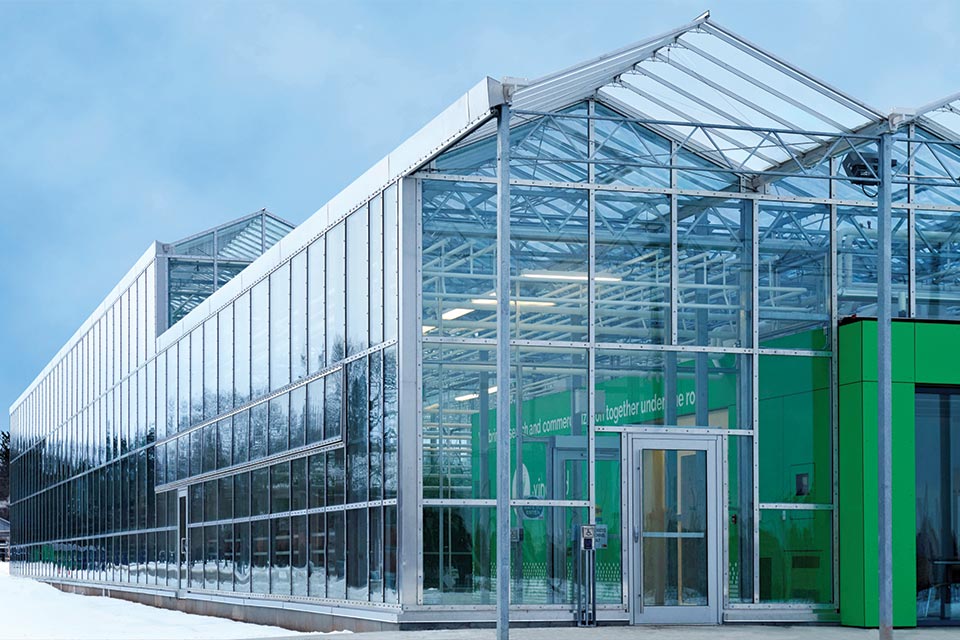How Vineland Is Expanding Its Greenhouse Grower and Supplier Service Offerings
 The Vineland Research and Innovation Centre in Canada recently launched a new horticultural automation services program that ranges from technology assessment and consultation to custom automation solutions to help growers ease labor challenges while improving yield and quality. In-house automation experts including researchers, engineers and business specialists, bring together a wealth of knowledge in data science, robotics, computer vision and systems integration to meet industry needs. Click https://www.youtube.com/watch?v=crPKbk_oe58 to view a video about these new services.
The Vineland Research and Innovation Centre in Canada recently launched a new horticultural automation services program that ranges from technology assessment and consultation to custom automation solutions to help growers ease labor challenges while improving yield and quality. In-house automation experts including researchers, engineers and business specialists, bring together a wealth of knowledge in data science, robotics, computer vision and systems integration to meet industry needs. Click https://www.youtube.com/watch?v=crPKbk_oe58 to view a video about these new services.
This announcement comes shortly after Vineland also began offering biologicals services. To learn more about these programs and others, we reached out to Tania Humphrey, Vice President of Research and Development at Vineland.
Brian Sparks: What was the reasoning behind launching these types of services at Vineland?
Tania Humphrey: It actually started a few years ago. We’re in the innovation space and we have a whole bunch of really smart people here with different expertise in biologicals, breeding, and automation. We kept getting approached by technology companies that service growers, who are also in the business of product development and innovation and had a need for research support. These companies would approach us and we’d do some contract work with them.
The more we got into this, the more we realized there’s a real need among companies who have an existing product and are looking for a neutral third-party validation study with valid scientific data. We do a lot of validation of products for greenhouse production. The more we’re getting into this space, the more we’re putting ourselves out there and targeting companies who are looking for those services. Our primary target is technology companies who provide their products to growers. We are open to doing work for individual growers if they want to do specific trials. It’s been a gradual shift as we become more proactive in engaging with clients.
We’ve always worked through grower associations who will co-invest with us, and now there are companies that want to own the results of the data for their own purposes. We’ve also worked directly with growers to evaluate their labor utilization and make recommendations on technologies.
Sparks: It seems like that’s got to be a pretty valuable service, to help growers know how to take the next step of investing in automation.
Humphrey: We see a real need for that, because typically what happens is, a grower goes to a trade show or they meet with a local company and it’s all about sales, so there may be a degree of skepticism out there. That is part of our value, because we’re an independent nonprofit and can offer neutral scientific recommendations.
Sparks: Can you talk a little bit about taking research that goes on in one of your own facilities and applying it to real-world growing operations?
Humphrey: Part of what we have done is set ourselves up as a kind of pre-commercial space that helps us do things at a bit larger scale that more closely resembles what the industry is using. It’s not identical, but we try to emulate the commercial environment as much as possible in our own facility. We also work with growers at their facilities if they are close, so we can run trials at commercial growing operations.
One of the advantages we find with our facility is because it’s not a commercial growing facility, a commercial grower can come in and trial a technology or new product while not endangering their own crop. One of the advantages we find particularly is in the area pest management is. We can deliberately expose whatever we’re growing to any pests and disease pressures and validate new products in a way that a commercial grower would never do in their own environment.
Sparks: Can you talk about how you’re working across multiple crop segments, from ornamentals to greenhouse vegetables to cannabis?
Humphrey: Even though cannabis production in Canada is legal, there’s still a hesitancy to invest in research. It’s seen as a growth sector and the general perception is that companies are positioned to pay for research themselves. Of course, that means the research is all kept in house, which is why we haven’t really seen the benefits on the research side.
Sparks: If I’m a grower or supplier based in the U.S., and I wanted to participate in something like this, what would be the next step that I would take?
Humphrey: Just reach out to us. You can contact any one of our researchers, but I always suggest that people come to me as head of R&D, or our business development team, because we can funnel you to the research that the most makes sense,
Sparks: So what’s next?
Humphrey: Right now we have a range of program areas that have a fee-for-service model. We have automation, biological crop protection, consumer insights (which is more about the end product), and a plant varieties team that mostly does longer-term breeding. We will continue to look for other opportunities. You can learn more here.









